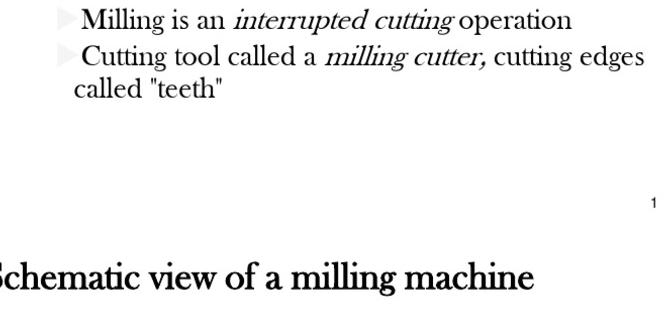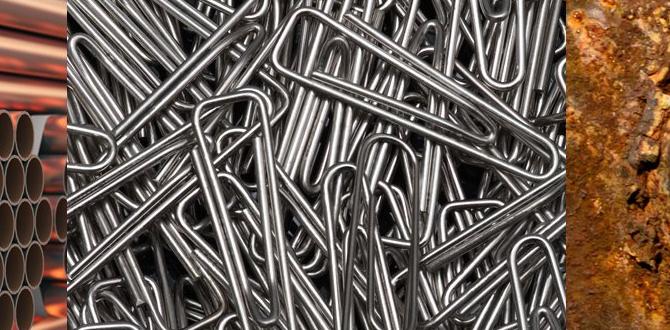A carbide end mill is the proven solution for machining Inconel, offering superior hardness and heat resistance crucial for this challenging superalloy. Choosing the right type, like a coated solid carbide end mill with a reduced neck and 8mm shank for Inconel 718, is key for efficient, chatter-free dry cutting.
Ever stared at a block of Inconel and felt a little intimidated? You’re not alone! This incredibly tough metal, often used in aircraft engines and other high-temperature applications, can be a real headache to machine. Traditional tools often struggle, leading to frustrating chatter, rapid tool wear, and subpar finishes. But what if there was a reliable way to tackle Inconel without all the stress? The good news is, there is! We’re going to explore how a specific type of carbide end mill is the secret weapon machinists use to conquer this superalloy. Get ready to learn how to make Inconel work for you, not the other way around.
Why is Machining Inconel So Tough?
Inconel and similar nickel-based superalloys are engineering marvels, designed to withstand extreme heat and corrosive environments. Think jet engine turbine blades or rocket components. This amazing resilience comes from their metallurgical makeup, which also makes them incredibly difficult to cut. Here’s why:
- High Strength at Elevated Temperatures: Unlike many steels that soften considerably when heated, Inconel maintains much of its strength even when hot. This means the cutting edge of your tool is constantly fighting against a very strong material.
- Work Hardening: As you attempt to cut Inconel, the material directly in front of the cutting tool becomes even harder. This work hardening effect rapidly dulls conventional tool bits and increases cutting forces.
- Low Thermal Conductivity: Inconel doesn’t conduct heat very well. This means the heat generated by friction during cutting tends to stay right at the cutting edge, quickly causing tool material to soften or even melt.
- Abrasiveness: The microstructure of Inconel can contain hard, abrasive particles that act like sandpaper on your cutting tools, accelerating wear.
All these factors combined mean that standard high-speed steel (HSS) or even simpler carbide tooling often fails quickly, leading to poor surface finish, inaccurate dimensions, and a lot of wasted time and money. This is where specialized tooling becomes essential.
Enter the Carbide End Mill: Your Inconel Ally
When you get into seriously tough metals like Inconel, you need tooling that’s up to the task. This is where carbide really shines. Tungsten carbide, the primary component of carbide tooling, is incredibly hard and can maintain its hardness at much higher temperatures than steel.
However, not all carbide end mills are created equal, especially for something as demanding as Inconel. We need to look for specific features. For Inconel 718, a popular variant, a specialized carbide end mill is not just recommended; it’s practically mandatory for efficient machining.
Key Features of an Effective Inconel Carbide End Mill
When selecting a carbide end mill for Inconel, keep an eye out for these crucial design elements:
- Solid Carbide Construction: This is non-negotiable. Solid carbide provides the necessary hardness and rigidity.
- Specialized Coatings: Coatings like Titanium Nitride (TiN), Titanium Aluminum Nitride (TiAlN), or even advanced Aluminum Titanium Nitride (AlTiN) add an extra layer of protection. These coatings reduce friction, increase surface hardness, and provide a thermal barrier, significantly extending tool life. For Inconel, AlTiN or highly wear-resistant TiAlN coatings are often preferred due to the high cutting temperatures.
- High Helix Angle: A higher helix angle (often 30° to 45°) helps to “slice” through the material rather than just “push” it. This results in a smoother cut, better chip evacuation, and reduced cutting forces.
- Multiple Flutes: While sometimes higher flute counts (like 4 or 5) can be used for finishing, for Inconel, 2 or 3-flute end mills are often preferred for roughing and semi-finishing. This allows for greater chip clearance, which is vital to prevent chip recutting and overheating.
- Reduced Neck/Swinging Type: This is where things get interesting for Chatter-free machining. An end mill with a “reduced neck” design means the shank diameter is slightly smaller than the cutting diameter. This “swinging” capability allows the end mill to deflect slightly and absorb vibrations that would otherwise lead to chatter. This is incredibly important for Inconel.
- Specific Diameter and Shank Size: For Inconel 718, common sizes like a 3/16 inch (approximately 4.76mm) or 8mm shank diameter are frequently used. The 8mm shank offers more rigidity than a smaller shank for its cutting diameter.
- Corner Radius: A small corner radius can strengthen the cutting edge and help manage heat and forces, preventing chipping.
Proven Solution For Inconel: The 3/16 Inch 8mm Shank Reduced Neck End Mill
Let’s zero in on a combination that many machinists find works exceptionally well for Inconel 718: a solid carbide end mill featuring an 8mm shank, a reduced neck design, and specifically suited for dry cutting. This configuration directly addresses the unique challenges of Inconel.
Consider an end mill with an 8mm shank. This provides a good balance of rigidity and allows for a smaller cutting diameter if needed, while still offering enough meat to handle the forces involved. The “reduced neck” is the star player here. When machining Inconel, vibrations can easily start and escalate into significant chatter marks on your workpiece and rapid tool failure. The slightly undersized neck allows the end mill a tiny bit of flex, acting as a natural damper for these vibrations.
Furthermore, an end mill optimized for dry cutting means its geometry, coating, and material are designed to handle the high temperatures generated without needing constant coolant flood. This often involves advanced coatings and geometries that facilitate efficient heat dissipation through the chips. While some machinists still prefer high-pressure coolant or minimum quantity lubrication (MQL) for Inconel, advancements in coatings and tool design have made effective dry cutting achievable with the right end mill.
For a beginner, using precisely this type of tool can simplify the process significantly. It’s designed to be more forgiving of slight parameter variations and is inherently better at preventing the dreaded chatter that can ruin a part and a tool.
When to Use a Reduced Neck End Mill for Inconel
You’ll want to reach for a reduced neck (swinging type) end mill when:
- Machining Inconel 718 or other difficult-to-machine nickel-based alloys.
- Experiencing chatter or vibration issues with standard end mills.
- Aiming for improved surface finish without the need for extensive post-machining work.
- Working in environments where coolant flood is impractical or undesirable.
- Seeking to maximize tool life and reduce the frequency of tool changes.
Step-by-Step Guide to Machining Inconel with a Carbide End Mill
Machining Inconel requires a methodical approach, even with the right tool. Precision and patience are your best friends.
Step 1: Selecting Your Carbide End Mill
As discussed, choose a high-quality solid carbide end mill specifically designed for high-temp alloys like Inconel. Look for features like:
- Material: Solid Carbide
- Coating: AlTiN or TiAlN
- Flutes: 2 or 3 for roughing/semi-finishing
- Geometry: High helix angle, optimized for chatter resistance.
- Type: Reduced neck (swinging type) for vibration damping.
- Shank Size: Consider 8mm for good rigidity with smaller cutting diameters.
- Cutting Diameter: Select based on your part requirements.
A 3/16 inch diameter end mill with an 8mm shank and the above features would be a prime candidate.
Step 2: Setting Up Your Machine and Workpiece
Rigidity is paramount. Any flex in your machine, tool holder, or work holding will negatively impact your cut.
- Machine: Ensure your milling machine is in good condition. A rigid machine with minimal backlash is essential.
- Tool Holder: Use a high-quality, balanced tool holder, preferably a shrink-fit holder or a high-precision collet chuck. Avoid runout at all costs.
- Work Holding: Clamp your Inconel workpiece extremely securely. Use a sturdy vise or custom fixtures. Minimize any overhang of the material from the fixture.
- Tool Engagement Depth: Start with shallow depths of cut. This is crucial, especially in the initial passes.
Step 3: Determining Cutting Parameters (Speeds and Feeds)
This is where experience and manufacturer recommendations come into play. Inconel requires significantly slower speeds and often faster feed rates compared to softer materials. Cutting parameters for Inconel are notoriously conservative.
Always consult the end mill manufacturer’s recommendations for Inconel. If none are available, here are some general guidelines for a solid carbide end mill:
| Operation | Surface Speed (SFM) | Feed Per Tooth (IPT) | Depth of Cut (DOC) | Width of Cut (WOC) |
|---|---|---|---|---|
| Roughing | 40 – 80 (with AlTiN/TiAlN) | 0.001″ – 0.003″ | 0.050″ – 0.100″ (or 10-20% of tool diameter) | 50% – 75% of tool diameter |
| Finishing | 60 – 100 | 0.0005″ – 0.0015″ | 0.010″ – 0.025″ | 25% – 50% of tool diameter |
Note: These are starting points. You will likely need to adjust based on your specific machine, tool, and Inconel grade.
Spindle Speed (RPM) Calculation: RPM = (Surface Speed SFM 3.82) / Tool Diameter (inches)
Feed Rate (IPM) Calculation: IPM = RPM Flutes Feed Per Tooth (IPT)
For example, machining with a 1/4 inch diameter end mill at 60 SFM:
RPM = (60 3.82) / 0.25 = 916.8 RPM. Let’s say 900 RPM to be safe.
If using a 2-flute end mill with an IPT of 0.002″:
IPM = 900 2 0.002 = 3.6 IPM.
Step 4: Executing the Cut (Dry Cutting Strategy)
With your tool chosen, machine set up, and parameters calculated, it’s time to make the cut.
- Engage the Tool: Plunge with caution, or preferably, ramp into the material at an angle if your CAM software supports it. Avoid plunging directly into Inconel whenever possible, as it puts immense stress on the end of the tool.
- Maintain Consistent Engagement: Ensure the tool is always cutting. Avoid retracting the tool mid-cut.
- Chip Evacuation: Watch the chips closely. They should be small, consistent, and ideally, a light brown or blue color. If they are stringy, dark, or melting, your speeds/feeds are likely too high or you have a rigidity issue. The reduced neck design helps, but good chip evacuation is still critical.
- Listen to Your Machine: Your ears are a great diagnostic tool. A smooth, consistent cutting sound is good. Any knocking, rattling, or shrieking indicates a problem – stop the machine immediately and investigate.
- Pecking/Step-overs: For deeper cuts, you might need to employ a pecking strategy. This involves retracting the tool slightly after a certain depth of cut to clear chips. For Inconel, shorter retracts are better. Consider climb milling for better chip flow and reduced cutting forces.
Step 5: Inspection and Adjustment
After each cutting cycle, take a moment to inspect your tool and workpiece.
- Tool Wear: Check the cutting edges for signs of chipping, excessive wear, or built-up edge (BUE).
- Surface Finish: Evaluate the surface finish on the machined wall. Is it smooth and consistent, or are there signs of chatter or tearing?
- Part Dimensions: Verify that your part is to size and tolerance.
Based on your inspection, adjust your cutting parameters. If chatter persists, try slightly increasing feed rate, decreasing spindle speed, or employing radial chip thinning strategies. If the tool appears to be wearing too quickly, reduce speed and/or feed, or consider a more aggressive coating.
Why Dry Cutting Works (and When to Consider Lubrication)
The concept of “dry cutting” Inconel might sound counterintuitive, given how much heat is generated. However, specialized carbide end mills with advanced coatings are designed to handle this. The high-performance coatings act as a thermal barrier and lubricant, and the tool geometry encourages efficient chip evacuation, which is crucial for removing heat from the cutting zone. By managing heat through chip removal and robust tooling, you can avoid the challenges associated with coolant, such as misting and post-machining cleanup.
That said, for certain operations or if you’re struggling to get satisfactory results, there are lubrication options:
- Minimum Quantity Lubrication (MQL): This is a fine mist of specialized cutting fluid applied directly to the cutting zone. It provides cooling and lubrication with minimal fluid usage.
- High-Pressure Coolant: For very demanding jobs, through-spindle coolant can be highly effective, but requires specialized machine and tooling setups.
Even with lubrication, the principles of rigid setup, appropriate speeds and feeds, and the use of a high-quality, specialized carbide end mill remain the same.
Benefits of Using the Right Carbide End Mill for Inconel
Investing in the correct carbide end mill for Inconel pays off in several ways:
- Increased Tool Life: Significantly longer usable life compared to general-purpose tooling.
- Improved Surface Finish: Reduced chatter and tearing lead to smoother, more precise surfaces.
- Higher Productivity: Faster material removal rates (within reason for Inconel) and fewer tool changes.
- Reduced Machine Downtime: Less risk of broken tools and workpiece scrap.
- Simplified Process: A tool designed for the material makes achieving good results more attainable, even for less experienced machinists.
- Cost Savings: While the initial tool cost might be higher, the overall cost per part is often lower due to increased efficiency and reduced scrap.
Case Study Snippet: The 8mm Shank Advantage
John, a hobbyist machinist working on a custom aerospace prototype, was struggling to mill Inconel 718 components. Standard end mills were failing within minutes, leaving rough finishes and causing immense vibration. He switched to a 3/16 inch, 2-flute, AlTiN coated solid carbide end mill with a reduced neck and an 8mm shank. He meticulously set his speeds and feeds based on manufacturer data, prioritizing rigidity. The result? He was able to complete a complex slotting operation with a smooth finish and the tool showed minimal wear after the job. The 8mm shank provided just enough rigidity for his small desktop CNC, while the reduced neck absorbed any nascent vibrations. This allowed him to successfully mill Inconel for the first time.
Frequently Asked Questions (FAQ)
Does Inconel require special end mills?
Yes, absolutely. Due to its extreme hardness, work-hardening tendencies, and high strength at elevated temperatures, Inconel requires specialized tooling. Solid carbide end mills with advanced coatings, optimized geometries, and often features like a reduced neck are essential for successful machining.
Can I use coolant when machining Inconel?
You can, and sometimes it’s beneficial. However, many modern carbide end mills designed for Inconel are optimized for dry cutting, relying on advanced coatings and chip evacuation to manage heat. If you do use coolant, a Minimum Quantity Lubrication (MQL) system or high-pressure coolant is often recommended for best results in Inconel.







